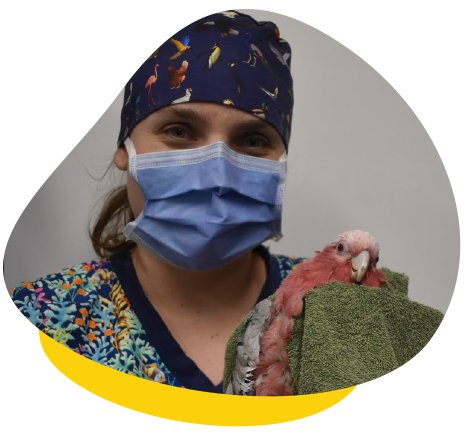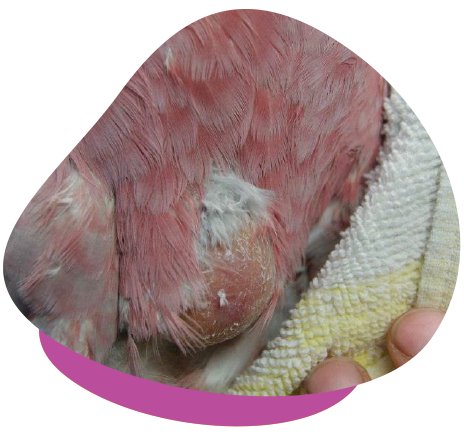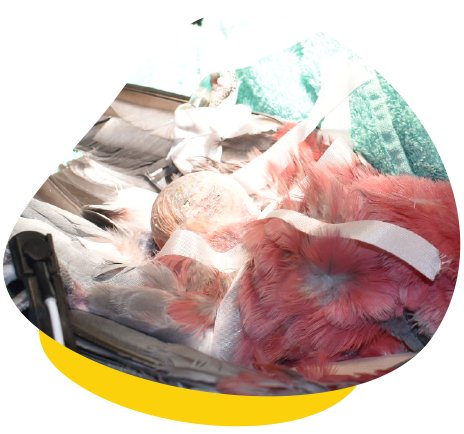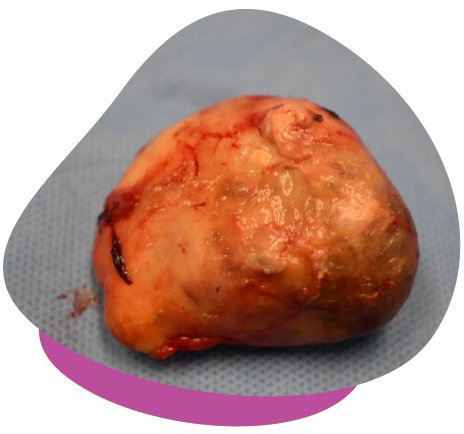The development of a lump or mass on a pet bird can be worrying for pet owners with some being more sinister than others. They can develop under the skin or in the body of pet birds for various reasons. Common causes of lumps in pet birds include abscesses, tumours (both benign and malignant), and cysts. Lipomas are a type of benign tumour in birds and are among the most common types of lumps we see in our companion feathered friends.

What is a Lipoma?
A lipoma is a benign tumour made of fat cells that usually grow just under the skin. In birds, lipomas typically appear as a soft, pale, round, lump under the skin. They can be found anywhere on your bird’s body but are most commonly seen in the abdominal region or the chest.
Which Birds Are Most Commonly Affected?
Lipomas are most commonly seen in overweight pet birds, especially cockatiels, budgies, lovebirds, galahs, cockatoos, and Amazon parrots, but they can develop in any bird.
What Causes Lipomas to Form?
Diets high in fat can lead to the accumulation of this in different areas of the body. High fat diets are typically those consisting of only seed, especially those with a high sunflower seed content. Fat often accumulates in places like the liver and under the skin; in some cases, aggregates of fat cells accumulate, causing the formation of a lipoma.
Other than forming lumps, lipomas can also cause obstruction to normal mobility and interfere with the function of other organs. It is not uncommon to see these lumps get so big that they begin to drag along a perch while the bird tries to walk.
How Are Lipomas in Pet Birds Diagnosed?
A veterinarian usually examines your bird and based on a thorough history, physical examination and palpation of the lump, may make a diagnosis of a suspected lipoma. A sample typically needs to be taken from the lump to confirm this diagnosis.
As lipomas can appear very similar to hernias (depending on their location), radiographs may be required to rule this out before it is safe enough to collect samples or proceed with surgery.


How Are Lipomas in Pet Birds Treated?
Treatment may be as simple as improving your bird’s diet to allow the size of the lipoma to reduce. Often, affected birds are on high-fat, all-seed diets. Slowly transitioning them onto a balanced, low-fat diet (pellets, vegetables, small amounts of fruit) often reduces or resolves lipomas.
In cases where the lump is causing discomfort or affecting the bird’s movement, surgical removal of the tumour may be recommended. However, lipomas can grow back after surgery, so diet, weight management and lifestyle changes are essential to prevent future tumours from developing.
Many external lipomas mimic the fat deposits that are occurring inside your bird, which can affect organ function. In these cases, blood testing will often be recommended to rule out other diseases that may also be occurring.
Can Lipomas Be Prevented in Pet Birds?
While there is no guaranteed way to prevent lipomas from developing in pet birds, maintaining a healthy balanced diet, providing plenty of exercise, and monitoring your bird’s weight can help reduce the risk. Regular veterinary check-ups are also important to catch any potential health issues early.
Early detection and treatment of lumps in birds is important to prevent potential complications and ensure the best possible outcome for your feathered friend.

If you notice a lump or mass on your pet bird, it is important to have it examined by your local Unusual Pet Vets team to determine the cause and the appropriate treatment option.

